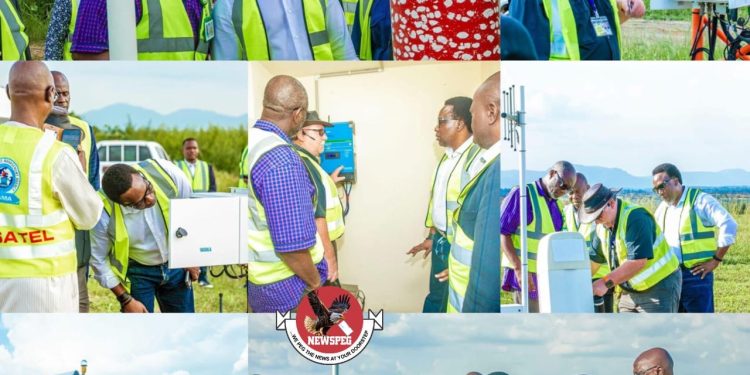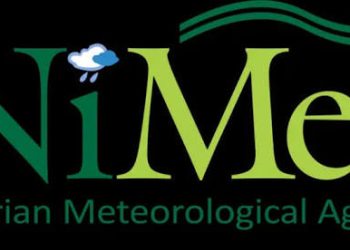By Nkechi Eze
The Director General and Chief Executive Officer of the Nigerian Meteorological Agency (NiMet), Professor Charles Anosike, has conducted an inspection tour of the ongoing Safe Tower upgrade project at the Nnamdi Azikiwe International Airport, Abuja, expressing satisfaction with the progress and quality of work achieved so far.
The upgrade, which includes the installation of modern meteorological instruments such as ceilometers, transmissiometers, lightning and thunderstorm detection systems, automatic weather stations, and the complete solarisation of the systems, is aimed at strengthening aviation safety and meteorological data acquisition at the airport. The solarisation component ensures that all installed systems are powered reliably with uninterrupted energy supply, a critical factor in maintaining consistent data availability for aviation and safety operations.
During the inspection, Professor Anosike visited five different equipment sites strategically located on the airside of the Abuja airport, where he received briefings and demonstrations on the installations. Visibly impressed by the technical precision and implementation pace, the NiMet boss applauded the quality of work carried out so far. He also expressed confidence in the competence of the contractors and the representatives of the original equipment manufacturers (OEMs) handling the project.
“The Safe Tower upgrade is a significant investment in Nigeria’s aviation safety infrastructure,” Anosike stated. “I am pleased with the quality of work done and the professionalism exhibited by the contractors and the OEM representatives. From what I have seen, I am confident that the project will reach 90% completion by the end of July 2025, which keeps us well on track.”
He noted that the Safe Tower Project is a safety-critical installation originally deployed about 20 years ago, and the ongoing upgrade marks a critical leap forward in improving meteorological support for safe air navigation in Nigerian airspace. The system is being modernized from the outdated MIDAS IV platform to the state-of-the-art AVIMET system, which offers superior data handling, automation, and integration capabilities for modern aviation meteorology.
According to the NiMet DG, the upgrade aligns with global standards and meets the International Civil Aviation Organization (ICAO) requirements for modern weather reporting and forecasting systems at airports. The new AVIMET system enhances real-time visibility measurement, cloud height detection, storm tracking, and accurate weather condition analysis, all of which are vital for safe aircraft takeoff, landing, and en-route navigation.
Professor Anosike reiterated that NiMet remains committed to delivering high-precision meteorological services to the aviation sector and beyond. He emphasized that the agency is actively modernizing its infrastructure and deploying next-generation technology across the country to support safety, enhance service delivery, and contribute to the overall efficiency of Nigeria’s air transportation system.
The Safe Tower upgrade at Abuja Airport is part of NiMet’s broader nationwide modernization initiative designed to enhance meteorological capabilities at major airports and strategic weather observation points. Upon completion, the upgraded system is expected to significantly improve weather monitoring and reporting efficiency for pilots, air traffic controllers, and aviation stakeholders, thereby reducing weather-related risks and delays in the Nigerian aviation industry.
As the project nears completion, NiMet has assured all stakeholders of timely delivery and long-term operational reliability. The Agency continues to engage closely with relevant partners and regulators to ensure that its infrastructure meets international benchmarks and adequately supports Nigeria’s growing aviation and transport sector.















